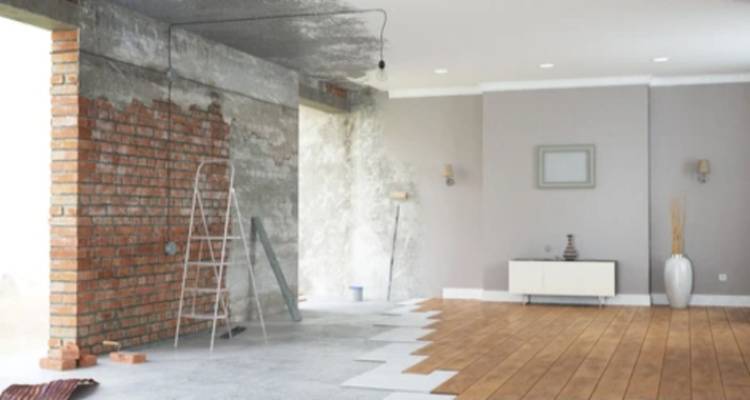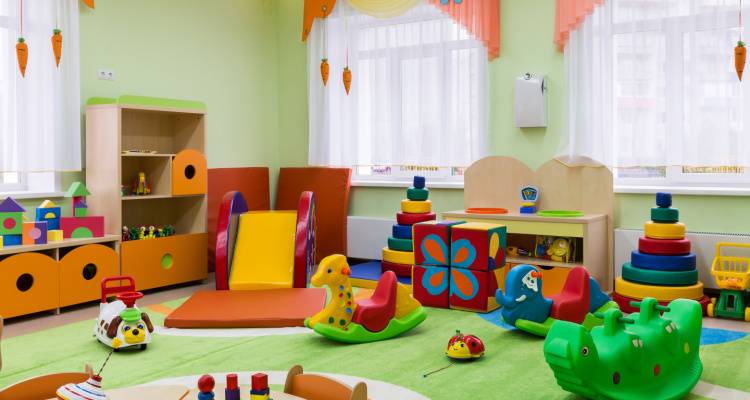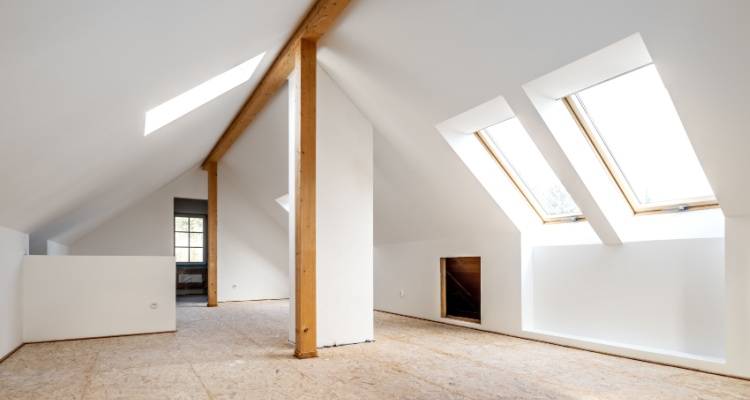How to Finance a Home Improvement Project
With the ongoing cost of living crisis, many households are seeking ways to reduce their costs. If you're looking to have a home improvement project undertaken but aren't sure how to finance it, you've come to the right place!

When deciding on what type of finance to choose, the type and overall cost of your home improvement project will affect the finance options you have.
So, let's take a look at what finance is available...
How Can I Finance a Home Improvement Project?
Once you know what home improvement project(s) you want to have undertaken, it's time to figure out how to finance it. Thankfully there are several stand-out solutions worth exploring for home improvement finance.
Cash
First and foremost, we must explore the most common approach to financing renovations, cash. Of course, the less expensive the project, the more suitable this solution will be for many homeowners.
Cash can also be used for a hybrid approach to financing. In other words, you might want to cover X% of the cost of a home improvement project with cash and cover the rest with another approach.
Pros:
✔ You can cover the costs there and then.
✔ No need to worry about paying interest.
✔ Arguably, the best way to fund a home improvement if you can afford it.
Cons:
✖ You'll need a certain amount of money saved to take this approach.
✖ Not suitable for most households in the current climate (as of Sept 2022).
Second Mortgages
The first approach involves borrowing money to remortgage your home. But this means moving your mortgage from one lender to another to secure a larger borrowed amount. You should look for a lender with cheaper rates than your current lender.

You would also be effectively paying off one mortgage with the borrowing offered from a second mortgage with your property acting as security. The additional amount you borrow with the second mortgage can then be used to pay off your home finance project.
To obtain a second mortgage, you'll need to prove it's within your budget to pay off a higher mortgage. In most cases, the valuation process will be free. Also, if you can't find better rates elsewhere, you might want to borrow more from your existing lender, which leads us to the next subsection.
Pros:
✔ You can avoid paying the full cost of a home renovation upfront.
Cons:
✖ You will pay more over time with interest.
✖ Not all households will be eligible.
Loans
Another way of borrowing money to pay off a home finance project is by taking out a loan.
There are several types of loans, namely:
Unsecured Personal Loan
These loans do not require that you offer up security (e.g., offering your property as security). In this case, a bank lends you money, and you commit to repaying each month along with interest until you've covered the full cost of the loan.
In most cases, personal loans can range from £1,000 to £25,000. Therefore, these would only be suitable for certain home improvement projects. In most cases, an unsecured personal loan will feature an interest rate of 11% to 32%. You usually have 3-25 years to pay off an unsecured loan.
Secured Loan
A secured homeowner loan will allow you to borrow much more. Secured loans tend to vary between £50,000 and £250,000. Aside from featuring larger borrowing amounts, secured loans often involve repaying over a longer time frame.
This is the sort of loan we mentioned at the end of the previous subsection (i.e., borrowing more from an existing lender). On average, secured loans come with an interest rate of 2-10% and, in most cases, must be paid off within one to ten years. If you're looking for a loan for renovations that are especially large in scale, you should consider a secured loan or alternatively, a home improvement loan.
Home Improvement Loan
Banks and lenders tend to offer unsecured personal loans designed specifically for home improvements. What makes these loans stand out is that they generally have lower interest rates than other personal loans. They also sometimes come with longer repayment periods than most loans.
Pros:
✔ You can pay for the home improvement project over several years by taking out a loan.
Cons:
✖ You'll pay more in the long term because of interest rates.
✖ Not everyone will be eligible for the necessary loan.
Credit Cards
You might even want to use a credit card to cover the cost of a home improvement project. Of course, this would generally only suit a smaller home improvement project.

Most credit cards have a limit of between £3,000 and £4,000. Since annual credit card interest rates can be between 5% and over 30%, they tend to be an expensive solution.
Pros:
✔ You can cover the cost of a home renovation upfront without the hassle of taking out a second mortgage or a new personal loan.
Cons:
✖ Generally high-interest rates.
✖ You'll pay more over time because of interest.
What Factors Do You Need to Consider When Financing a Home Improvement Project?
There are many things to take on board when financing a home renovation and how these will impact your options.
How Much Do You Need?
Before all else, you need to know how much money you'll need. You also don't want to run the risk of having a little less than is required. Therefore, you should have more money ready just in case the home renovation goes a little over budget.
With that said, if you expect your budget to run very tight, it probably means you don't have enough for the project in mind. So, if you were playing to cover a £5,000 home renovation and you have £5,200 in savings, it's probably best to borrow a few hundred or even a few thousand to cover some of the costs.
Obviously, if you don't have enough cash to cover a home improvement project, you'll need to borrow money. If you need a few hundred pounds or a few thousand pounds, you could look at using a credit card or even an unsecured personal loan.
However, if you need more than, say, £10,000, you may need to look at a secured personal loan/second mortgage. And if you require £25,000 or more, you'll almost certainly need to go with a secured personal loan/second mortgage. Don't forget to consider interest rates when making a decision, too.
The Type of Project
The larger the project, the more money you'll need. So, as the previous subsection pointed out, the more expensive the project, the more limited your financing options become.
While you might be able to cover the cost of installing new central heating with cash or a credit card, you may need (at least) an unsecured personal loan to pay for rewiring a home. Beyond that, and unless you have substantial savings, you would very likely need a secured personal loan/home improvement loan to pay for a loft conversion.
Income and Outgoings
You need to look at your budget when deciding how to finance a home improvement project. If you want to take out a loan or a second mortgage or pay for a home renovation with a credit card, you must be sure you can pay it off. And this, of course, includes taking interest into account.

Of course, the bank or lender will very likely be able to determine if you can afford a loan/mortgage in the first place. But there's no point in trying to fool them into thinking you can cover the cost when in reality, things are more precarious.
After all, if you were to default on your repayments, it would prove worse for you than the bank/lender. So be sure you can afford it before borrowing any money to keep on the safe side.
Credit Rating and Credit History
Your credit rating and history (or lack thereof) are important when trying to borrow money. If you have a poor credit rating, you may not be approved for borrowing, or your borrowing amount may be limited.
For instance, most credit cards have a limit of £3,000 to £4,000. For those with a poor credit history, they may be limited to £1,500 or as little as £200. Likewise, your credit history matters, too.
Having no credit history can make it harder to get a loan, or, as with poor credit history, you may find you can't borrow as much as you could with a long (and positive) credit history.
What are the Pros and Cons of Financing Home Improvements?
There are a whole host of advantages and disadvantages to financing a home improvement project. Let's take a closer look.
Pros:
✔ An opportunity to give your home a new lease of life.
✔ You can increase the value of your property.
✔ Can represent an investment into improving your property (e.g., a new boiler will likely offer improved energy efficiency and cheaper energy bills).
Cons:
✖ The home improvement cost.
✖ Can be a stressful and time-consuming process.
How to Save Money on Home Improvements?
So, what else can you do to keep your costs down when it comes to financing for home improvement?
Here are a few ideas:
- Set a budget and ensure you stick to it. Make an active effort to keep within your budget.
- Pay fully in cash if you can, or even pay some of the cost in cash, thus minimising how much you'll spend in interest for any money borrowed.
- Don't rush into it. The more time you spend on planning your home improvements and finding the right people to work with, the more likely it is to go well and work within your budget.
- Take a DIY approach was safe and possible. Double-check with a qualified professional if unsure about any aspect (and whether it can be done DIY). You may want to undertake some DIY work and hire a professional for the rest. Again, some jobs must be done by a qualified individual.
- Try to secure as much value for money as you can. You can achieve this by balancing expensive materials with cheaper ones. Find the right mix of costly and inexpensive materials (and mid-priced materials, of course). Make sure you don't create obvious contrasts in the quality of your renovation, however.
- Don't forget to sell anything you won't use. That might be something you initially purchase before realising it's unnecessary or a component of your existing home that you no longer need.
Who Should I Speak to About Financing a Home Improvement?
This will depend on how you want to finance your home renovation. Let's start with taking out a second mortgage. In this case, you'd likely need to contact a bank or a building society. However, you could also look into a credit union or similar organisation, but banks and building societies tend to offer the best interest rates.
However, if you want a personal loan, your options are wider. Popular UK loan companies include M&S Bank, Zopa, and Santander. As for credit cards, you can apply for one via a card issuer, whether it be a bank, credit union, or fintech company.
What Questions Should I Ask When Seeking Funding for Home Improvements?
Here are some questions you should consider asking (where applicable):
- What is your interest rate?
- Are there any additional fees, aside from interest?
- How long does it generally take for the loan/mortgage to be approved?
- What would the length of our contract be?
- How can I make my repayments?
- How often will I make repayments?
- Do you offer different interest rates based on how long the repayment time frame is for the loan/mortgage?
Want to get a quote for a home improvement project before applying for finance? You can get a free quote here.
Last updated by MyJobQuote on 8th November 2022.







